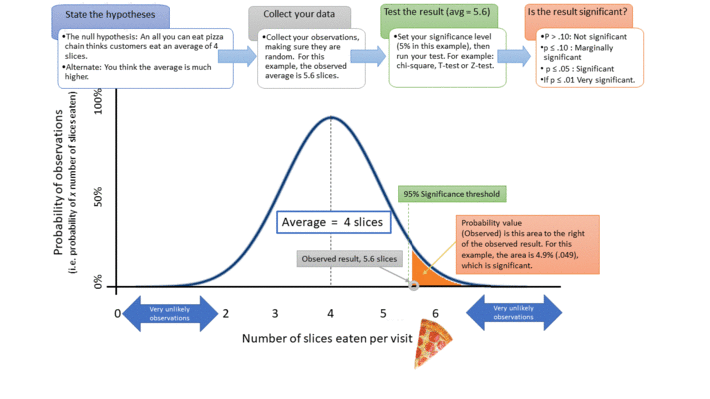P-values (“Probability values”) are one way to test if the result from an experiment is statistically significant. This picture is a visual aid to p-values, using a theoretical experiment for a pizza business.

P-values (“Probability values”) are one way to test if the result from an experiment is statistically significant. This picture is a visual aid to p-values, using a theoretical experiment for a pizza business.
